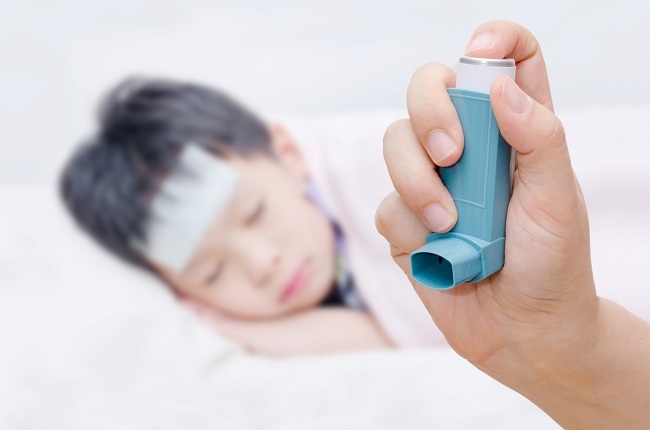Children with diabetes can experience symptoms in the form of frequent thirst and frequent urination, as well as eating a lot but losing weight. As a parent, it is important for you to recognize the various risks and symptoms of diabetes in children so that this condition is not too late to be treated by a doctor.
The body needs the hormone insulin to help cells, tissues, and organs use glucose or blood sugar as an energy source. The hormone insulin is produced in the pancreas.

When the hormone insulin is reduced or the body's cells have difficulty using insulin, there can be a buildup of blood sugar. This is what causes diabetes.
According to data from the Indonesian Pediatrician Association (IDAI), the incidence of diabetes in children aged 0-18 years in Indonesia has increased to more than 1000 cases in the last 10 years.
Causes of Diabetes in Children
Based on the cause, diabetes in children is generally divided into 2 types, namely:
Type 1 diabetes
Type 1 diabetes is a type of diabetes that is more common in children and adolescents. However, type 1 diabetes can also sometimes affect infants, toddlers, and adults.
Type 1 diabetes occurs due to an autoimmune disorder, in which the child's immune system damages or destroys its own pancreas, resulting in impaired pancreatic function.
As a result, children with type 1 diabetes produce little or no insulin. This condition can cause blood sugar levels to rise and over time damage organs and body tissues.
Until now, the exact cause of type 1 diabetes in children is not known. However, a child can be susceptible to type 1 diabetes if he has the following risk factors:
- Genetics or heredity, for example having a family history of type 1 diabetes.
- History of viral infection.
- Unhealthy eating patterns, for example frequently consuming sweet foods or drinks, such as candy, ice cream, packaged fruit juices, or dried fruit.
Type 2 diabetes
Type 2 diabetes is caused by insulin resistance or a condition when a child's body cells have difficulty using insulin to use blood sugar as energy. In certain cases, type 2 diabetes can also occur due to reduced insulin production. Due to the occurrence of these disorders, children's blood sugar levels can increase.
Type 2 diabetes is usually prone to occur in children aged over 10 years or in their teens.
There are several risk factors that can make children susceptible to type 2 diabetes, namely:
- Have a parent or sibling with a history of diabetes.
- Overweight or obesity in children.
- The habit of often eating foods high in sugar and fat.
- Less active or rarely exercise.
Symptoms of Diabetes in Children
Symptoms of type 1 and type 2 diabetes are also generally difficult to distinguish and often resemble one another. Some children with type 1 or type 2 diabetes do not show any symptoms or feel any complaints.
However, in some other children, diabetes can cause the following symptoms:
1. Frequent thirst and urination
Excess blood sugar levels will be excreted through the urine. This will make the child urinate frequently or even wet the bed. With a lot of body fluids that come out, the child will quickly feel thirsty and drink more than usual.
2. Appetite increases
Children with diabetes will have difficulty producing energy due to impaired function or reduced amounts of insulin. As a result, children will often feel hungry and eat more to get energy.
3. Weight loss
Even if you eat more than usual, your child with diabetes will lose weight. Without a supply of energy from sugar, muscle tissue and fat stores will shrink. Weight loss for no apparent reason is often the first sign of diabetes in children.
4. Look tired or lethargic
Children with diabetes may appear weaker and lethargic due to a lack of energy in the body. Children can still look lethargic even though they have eaten in large quantities or portions.
5. Blurred vision
High blood sugar levels due to diabetes over time can cause the eye nerves to swell. This condition can make the child experience impaired vision or his vision feels blurry.
6. Wounds or infections appear in the body that are difficult to heal
Due to high blood sugar levels, a child with diabetes will have sores that are difficult to heal when injured or injured. In addition to hindering the wound healing process, diabetes can also make children susceptible to infection.
7. Black skin color
Insulin resistance can cause dark skin, especially in the armpits and neck area. This condition is called acanthosis nigricans.
In addition to some of the symptoms above, a child with diabetes also often shows other signs, such as being fussy or crying constantly, breath smelling like fruit, and diaper rash appearing.
Diabetes Treatment in Children
Treatment of diabetes in children needs to be adjusted to the type of diabetes suffered by the child. To determine the diagnosis, the doctor will perform a physical examination and support in the form of blood sugar tests and diabetes autoantibody tests to determine whether the child has type 1 or 2 diabetes.
If the child is diagnosed with type 1 diabetes, the doctor will provide insulin therapy to control blood sugar. Meanwhile, if the child has type 2 diabetes, the doctor will give antidiabetic drugs. Insulin therapy can also be given to type 2 diabetes, if the diabetes suffered by the child is already severe.
In addition, doctors will usually recommend parents to maintain their child's diet and invite their children to exercise regularly.
Diabetes that is handled late will generally cause a number of severe complications that can endanger the condition of the Little One. Therefore, make sure you check your child's condition to the pediatrician if he has a high risk or has shown some symptoms of diabetes in children.









